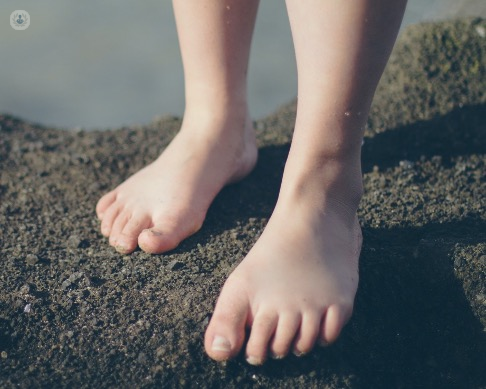Nail disorders: how should they be treated?
Escrito por:There are a range of nail disorders in the UK, fungal invasion of the nail structure is one of the most common, it represents approximately half of all nail abnormalities in adults.

We recently got in contact with one of our highly-experienced dermatologists, Dr Ravi Ratnavel, to discuss nasal disorders, what the causes are and whether there are any home remedies.
What are the basic nail disease disorders?
Nail disorders commonly arise from infective, inflammatory and traumatic causes. Nail dystrophy can manifest as grooves, ridges and splitting of the nails. Pitting is a clinical sign more usually picked up by doctors rather than their patients.
Infections of the nail can be fungal or bacterial. They are seen more commonly in those with occupations or life styles that involve lots of exposure to water.
Fungal infections may or may not be painful but frequently present with nail dystrophy affecting the finger or toe nails asymmetrically.
Bacterial infections can arise in association with inflammation of the nail bed or folds and are frequently painful. There may be obvious signs of redness and pus. They are seen more commonly with in-grown nails on the feet.
Inflammation of the nail bed may or may not be obvious in cases of nail dystrophy associated with generalised skin eruptions such as psoriasis and lichen planus. Inflammatory nail disorders can also present in isolation.
Nail trauma from running and other sports and also over-zealous manicuring can produce nail dystrophy with sometimes secondary infection. Allergic reactions are sometimes seen with artificial nails. Drug reactions are a much rarer cause of nail disorders.
What are the signs?
Nail splitting, grooves, ridges and pots. The nail may lift off from the nail bed. There can be redness of the adjacent skin which can feel sore. Some conditions are associated with crumbling of the nails and accumulation of debris underneath the nail plate.
Is ripping or lines on nails always a sign of disease?
Not necessarily. Longitudinal ringing can occur in healthy nails as can pigment streaks. However, both signs can also be seen with disease affecting the proximal nail plate / bed.
How do you treat these conditions?
Treatment is dictated by the underlying cause. A dermatologist will often make a clinical diagnosis, but other investigations such as nail samples and swabs for fungal and bacterial culture, a nail biopsy or allergy (patch) testing for glue allergy may be indicated.
Drug treatments might be required for bacterial and fungal infections. Surgical treatments are sometimes appropriate, particularly in the context of in-grown nails.
Are there any home remedies?
Antiseptic soaks using proprietary products or cider vinegar can help reduce inflammation and superficial infections. Careful nail care is often helpful in preventing recurrence of many nail disorders.
For more information regarding nail disorders, we recommend booking an appointment with a leading dermatologist such as Dr Ravi Ratnavel. Click here to visit his TD profile today for more information on appointment availability.


